SUMMARY
This is AI generated summarization, which may have errors. For context, always refer to the full article.
![[OPINION] Sara’s elephant](https://www.rappler.com/tachyon/2023/06/tl-saras-elephants.jpg)
It is not just one elephant in the room. Apparently, there is a whole herd. And they’re not just hiding behind the translucent glass and crystal cabinet. These colossal creatures are stampeding, albeit seemingly undetected, perhaps overlooked and ignored.
Based on the pronouncements of the highest of the Department of Education’s officials, most of these were born during the last couple and a half years under the previous administration. They started multiplying as the pandemic spread, forcing schoolchildren indoors, quarantined and prevented face-to-face classroom learning and the benefits of vigorous interactive discourse.
Perhaps. But the numbers show a deeper, longer drawn-out problem.
Fortunately, not all elephants-in-the-room were ignored. Some of the Education Department’s major problems did get the attention of officials. When the economy re-opened under a new president, despite the warnings of healthcare professionals, the department declared that the early return to face-to-face classroom learning was its solution to time lost to the pandemic. An easy palliative both simplistic and simple. And, incidentally, apropos. After all, profundity, planning, and evidence-based rationalization were not strong suits.
Led by one of the country’s most powerful politicians, the department tried throwing money at the problem. They demanded a frighteningly high un-auditable intelligence budget increase compared to previous budgets. They figured an additional P100 billion was sufficient to solve the education crisis. Unfortunately, even with the highest slice of government’s planned expenditures, their total of P710 billion for 2023 is a mere 4.3% of our gross domestic product (GDP), P1.4 trillion short of the 6% of GDP required by global standards.
According to the World Health Organization, the Philippines is the third most afflicted with mental health issues in the Western Pacific Region. From that universe, note a significant subset. As much as 12% to 15% represent youth who have sought help in coping with suicidal thoughts.
Given the significant percentage representing the youth ages 17 to 18, all presumably still in school, at least one COVID collateral colossus thought to be a product of extended quarantine periods was visible, and the mental issues it presented as part of the disappearing quality of education quickly found a cure. Following a campus brawl and two deaths in different schools, education officials attributed these to mental health issues.
Note the quick response. Education officials immediately directed its offices to coordinate with the police to identify schools that “require spot inspections of weapons among personnel and learners.”
Judging by the expertise of one Cabinet official offering up his version of a solution, then this one problem might well have been solved. As a justification for the iron-fisted insistence that military training (Reserve Officer Training Course or ROTC) be re-imposed, a former general then heading the Department of the Interior and Local Governments claimed that ROTC could “cure” mental health issues.
Such incredible solutions beg defining what constitutes a mental health issue among the young from the perspective of our officials. Will ROTC and “spot inspections” address anxiety, depression, eating disorders, substance abuse, and psychological trauma – the five most prevalent issues among today’s youth? Will sending the police into classrooms cure childhood stress, anxiety disorders, and social isolationism?
Moving on to more measurable benchmarks, allow us to review other pressing educational concerns and the manner in which these have been addressed, if at all. Each has been quantified by a specific global metric that highlights the total curse afflicting our educational system.
On the World Population Report’s findings that the Filipino’s intelligence quotient (IQ) remains below average, the immediate response of our education officials was that they would “read the report and discuss interventions.” Among the planned interventions would be “holistic” inclusivity programs, Filipino sign language, Indigenous Peoples programs, and the teaching of Arabic.
The World Bank reports that 90.9% of Filipino children by the age of 10 are unable to read, write, or understand simple text. This “learning poverty” is worsened by as much as 5% of primary school children who remain un-enrolled.
Note the Education Department’s response, ranging from the Bawat Bata Bumabasa (3Bs) initiative to be run in tandem with the Every Child a Reader Program (ECARP) and the Early Language, Literacy, and Numeracy Program (ELLN). Also include the Mother Tongue-Based Multilingual Education (MTB-MLE), and the Pedagogical Retooling in Mathematics, Languages, and Science (PRIMALS) programs.
This alphabet soup is part of the Sulong EduKalidad campaign and Basic Education Development Plan (BEDP) 2030 yet to materialize “in the coming years.”
Meanwhile, as these slowly gestate, for the next five years of middle school, 91% of students, not being able to read, write, or understand basic text, will carry a learning disability and eventually be unemployable.
Now allow us to identify a few non-quantifiable albeit equally formidable socio-cultural barriers that aggravate the quantifiable negatives.
Last year, as a response to calls for voter education, we witnessed a startling pushback labeling voter education as elitist. The election results eventually reflected this anti-education rebuff. Ironically, it comes with a hefty price for those who can least afford the cost.
Anent to the anti-education putdown, discern its permutations. These include a cultural disposition that values “ma-diskarte” over intellect, and the “hustle” versus rationalization, where “diskarte” is a laudatory trait guised as resourcefulness or “abilidad.”
To validate, against their academic credentials, discern the mandates earned by our highest elected leaders in the Executive and Legislative branches. Now rate their productivity.
The herd of elephants in the room is stampeding. Note unaddressed stigma, from classic math anxiety and the fear of numbers, to a creeping autocracy that views critical thinking as seditious dissent.
As we paste this collage unto our present realities, by viewing the emerging tapestry largely woven by our officials, we might see an unfortunate specter that explains the economic and political plight we are inflicted with.
According to Maximilien de Robespierre, one of the lessons of the French Revolution is that the secret of tyranny is to keep the public ignorant.
Woefully tragic, our children were to be our hope for a better future. – Rappler.com
Dean de la Paz is a former investment banker and managing director of a New Jersey-based power company operating in the Philippines. He is the chairman of the board of a renewable energy company and is a retired Business Policy, Finance, and Mathematics professor. He collects Godzilla figures and antique tin robots.
Add a comment
How does this make you feel?

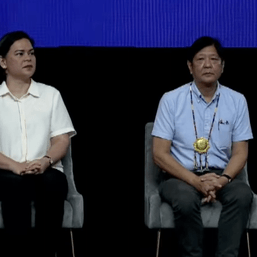
![[The Slingshot] Red zipper on the mouth of Sara Duterte](https://www.rappler.com/tachyon/2024/04/TL-red-zipper-sara-duterte-april-12-2024.jpg?resize=257%2C257&crop=335px%2C0px%2C720px%2C720px)
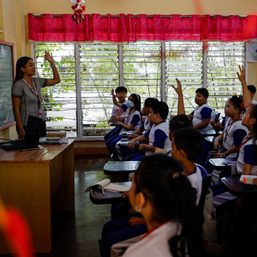
![[OPINION] How about setting up a heat health warning system in PH schools?](https://www.rappler.com/tachyon/2024/04/heat-health-warning-system-in-PH-schools.jpg?resize=257%2C257&crop_strategy=attention)

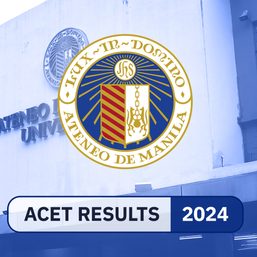
![[Time Trowel] Mentorship matters](https://www.rappler.com/tachyon/2024/04/mentorship-matters.jpg?resize=257%2C257&crop_strategy=attention)
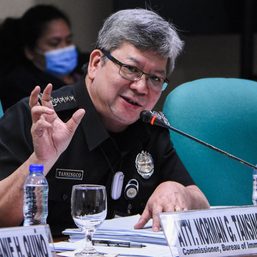
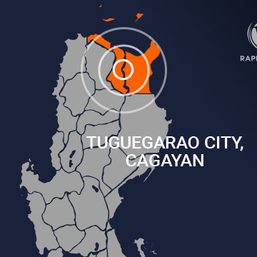
There are no comments yet. Add your comment to start the conversation.